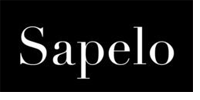By Malikah A. Shabazz

Top left: Nia Malika Dixon, Top right: Nijla Mu’min with ‘Dream’ cast, Left bottom: Sultan Sharrief, Bottom right: Qasim Basir with Nia Long from ‘Moozlum’ World Premiere
“Thus all Art is propaganda and ever must be, despite the wailing of the purists. I stand in utter shamelessness and say that whatever art I have for writing has been used always for propaganda for gaining the right of black folk to love and enjoy. I do not care a damn for any art that is not used for propaganda. But I do care when propaganda is confined to one side while the other is stripped and silent.” – W.E.B. DuBois
Often times we can be very critical of our lack of inclusion in the media’s portrayal of American Muslims. That criticism is warranted, given the history of Muslims in this country, and the profound impact the African American Muslim Community has had on Islam in American society. Not only are we often excluded from the news media, but we fail to see our faces represented in Hollywood. Historically, television and film have been used as a tool to promote specific imagery of specific people, i.e. the token Black guy, the Asian math genius, etc. The complaint has been the lack of access to the resources needed to create and promote diverse stories. However, with the advancement of technology, the birth of social media, and the creation of video sharing platforms such as YouTube and Vimeo, content creators have distribution platforms that eliminate the need for Hollywood production studios.

Nia Long and Qasim Basir on the set of featured film Moozlum
The question then becomes — are our Southeast Asian and Middle Eastern brothers and sisters who create media responsible for including us in their content? We, African American Muslims, are so quick to criticize others for not including us in their work, yet we fail to look for and support the work created by our own. It is time for us to amplify our voices instead of waiting on others to do it. When we rely on others to share our stories, we are giving them free range to interpret our culture how they see fit. We have a wonderful opportunity to inform the world of our presence through media. Not only is it educating society on our diverse communal experiences, it also serves as a form of dawah.

Writer and Director Nia Malika Dixon
How does one create a film or web series? We are full of resources. The key is pinpointing individuals within our community who could successfully contribute to such a project. A story by Nadirah Anjail, directed by Nia Malika Dixon and produced by Rashad Mubarak could make for an amazing story on the African American Muslim experience. We need to take inventory of the creatives in our community. Every Muslim YouTube channel you see is not managed by Academy Award winning filmmakers. They are just individuals who wanted to create something new or a counter narrative.

What We Learned Along with Way, A novel by: Nadirah Angail (pictured left)
If you have a cell phone with a camera, a computer with either Windows Media Maker, iMovie or any free editing app, access to Youtube, and an idea, you have the tools you need to begin creating your own imagery. There have been award winning movies shot entirely on iPhones. Having expensive equipment doesn’t guarantee a perfect finished product. Yes, making films cost money, but independent filmmakers often find ways around certain costs, whether it’s someone donating their space as a location for filming, or a student actor who is trying to build his/her portfolio, there are ways of finding resources you need without going bankrupt. For example, Nijla Baseem Mu’min recently created a Kickstarter campaign to fund her project about a young woman whose world is turned upside down when her mother converts to Islam.
If you aren’t interested in creating images but still yearn to see them, and you have access to social media and the internet, then you have the tools needed to curate these images. Just as the creation of these new narratives are important, we also need to make sure these stories are heard. Both Qasim Basir and Sultan Sharrief are making their mark in the film industry creating films that tell our stories. We must support all of our storytellers by sharing Facebook & Twitter posts, paying to see the films they create, buying DVDs, and hosting events in our communities that showcase their work.

We are the solution. We have the tools and resources needed to bring our own stories to life. Let’s get to work!

Malikah A. Shabazz is a Detroit-born Brooklyn-based media professional working as a coordinator in the Cable television industry. She also serves as company manager for Soul Science Lab, LLC and works throughout Brooklyn as an event producer. She is a filmmaker who has completed two documentary shorts and is working on her first dramatic short film.











No comments